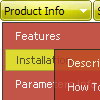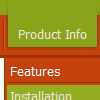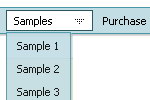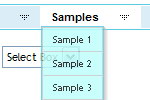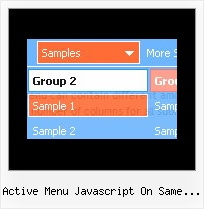Recent Questions
Q: Deluxe Menu supports keyboard navigation eg. CTRL+F2 to activate menu.
Why does Deluxe Tabs not have the same feature?
I would like to use both java script navigation menu systems on the same page, and both need to have keyboard navigation for accessibility reasons.
A: Unfortunately it is really so, Deluxe Tree and Deluxe Tabs doesn'thave such a feature now.
We'll try to add this feature in the next versions of the java script navigation menu.
Q: And another question about displaying the links code in html.
How to create a drop down menu links to be displayed in the html code for search engines to catch them, is that possible?
A: You can use search engine friendly code and install it on yourpage before you call your data file.
You'll see text links in that case.
To create a search engine friendly menu you should add additional html code within your html page:
<div id="dmlinks">
<a href="http://deluxe-menu.com">menu_item_text1</a>
<a href="http://deluxe-tree.com">menu_item_text2</a>
...etc.
</div>
To generate such a code use Deluxe Tuner application.
Run Tuner, load your menu and click Tools/Generate SE-friendly Code (F3)
Q: I am currently tasked with creating a large intra-type net for our company. ( knowledge base, FAQ etc. for internal use only ).
At this time I am making plain text or table based menus and getting tired of having to add the drop menus to EVERY page individually in our little intra-web. I would like to purchase software that makes groovy looking menus, but also get the information needed to have them appear on ALL pages after editing the menu once if you know what I mean.
Unfortunately my web authoring experience is best suited to circa-1996 web pages I can hash out in notepad in my sleep. However, I have been told in order to do what I am doing I need to use CSS or styles or cascading stylesheets and not sure if your software will do that.
If I purchase this software and whip up a neat little menu, would you be able to send me information on how to include it in a css as I described above? I would essentially need to know the code or commands to have it appear in all of the pages I create, once I make the menu file. If that is something you can assist me with, I can purchase this right away.
A: Deluxe Menu is Javascript code only. It requires several .js files andit's generated on a client side.
If you don't want to create your drop menus on each page, you can try to useframes, the menu has a cross-frame mode. Also you can use aserver-side script (php, asp, vb, etc.) to generate html pages fromtemplates on your server.
Q: Is it possible to insert an item at the top of the submenu in the popup menu?
A: To insert item in the specific position you should use thefollowing function:
function dm_ext_addItemPos (menuInd, submenuInd, iParams, Pos)






